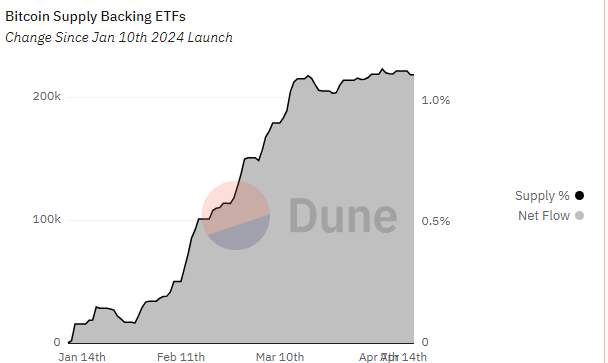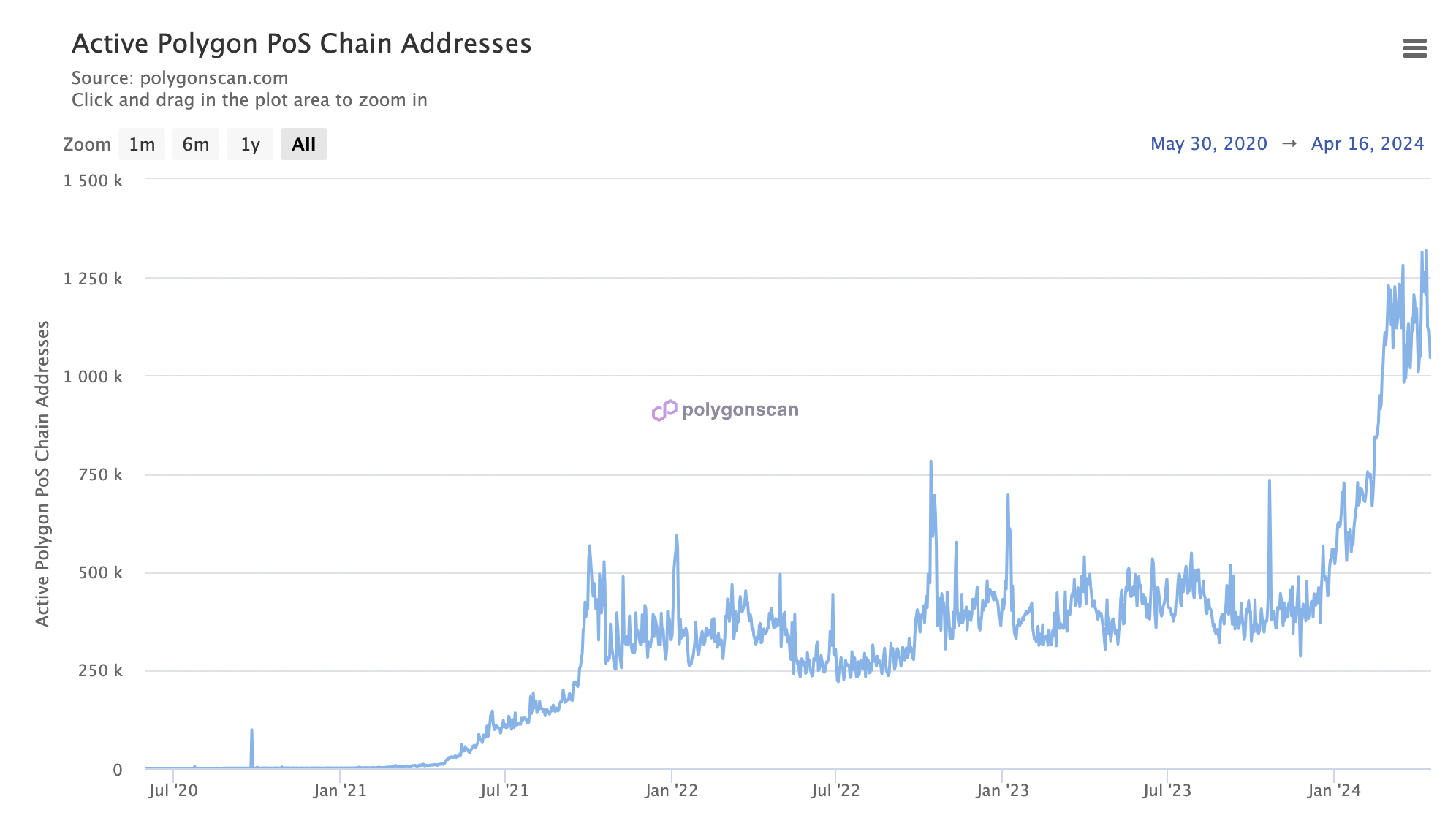
Q1 2024
Lighthing the Way
Dear Investors and Colleagues,
Welcome to the inaugural edition of our quarterly newsletter, Perspectives from the Lighthouse where we will share key highlights of our fund's performance and present insights from our partners across the broader market landscape. After two years of trading on partner capital, Lighthouse Collective proudly opened its doors to external investors on December 13th, 2023. In celebration of completing our first quarter with this new capital structure, we wanted to use this opportunity to share our commitment to achieving sustainable, long-term growth and success for all our stakeholders
Macro View
We remain constructive on the medium-term prospects for Bitcoin (BTC), which we believe will positively influence the broader cryptocurrency market. The primary driver for BTC's price in Q1 were inflows into BTC spot Exchange-Traded Funds (ETFs), such as Blackrock’s IBIT, which is amongst the fastest growing ETFs in history. While inflows to BTC spot ETFs have leveled off since Mid-March, there are a number of potential incremental demand drivers that may re-accelerate inflows over the course of 2024.

Wealth managers currently have the option to grant clients access to BTC spot ETFs upon request. We believe this initial wave of demand may be largely behind us. Prospectively, demand may come from wealth managers who begin to recommend clients allocate a portion of their portfolios to BTC ETFs, a strategy currently under exploration by Wells Fargo, Bank of America, UBS, and Morgan Stanley, according to Barrons. Additionally, firms may increasingly incorporate BTC Spot ETFs into existing products. For instance, Blackrock is integrating BTC ETFs into their broader fund offerings, such as the Global Allocation Fund, Strategic Income Opportunities Portfolio, and Global Bond fund. Pension funds and sovereign wealth funds are also potential sources of future demand. For example, the Arizona Senate recently moved to include BTC ETFs in state retirement funds.
On an international scale, the approval of the first spot Bitcoin ETFs by the Hong Kong Securities and Futures Commission occurred on April 15th, with the products expected to launch by the end of April. In South Korea, the Democratic Party won a solid majority in the country's elections on April 10th. This party has promised to approve Bitcoin Spot ETFs, with the approval expected within the next 6-12 months. South Korea has a significant presence in the cryptocurrency markets. Notably, the South Korean Won surpassed the U.S. dollar as the most-used fiat currency for trading crypto in the first quarter of 2024, according to Kaiko data. Meanwhile, last week the ruling democratic liberal party of Japan was reported to be considering issuing a local Bitcoin ETF. Japan's government pension fund—the world's largest—reported last month that it was considering investing in Bitcoin. Lastly, in March, the Japanese government advanced a proposal allowing limited investment partnerships to invest in cryptocurrencies.
While the demand side for BTC is potentially bolstered by an improving regulatory environment and increasing access to digital assets and spot ETFs, the supply of Bitcoin remains constrained. The proportion of Bitcoin that has not been transacted in over 12 months—an indicator of long-term holding—remains above prior cycle’s highs. There has been some recent profit taking, but selling has also been due to factors like bankruptcy proceedings and the U.S. government auctioning Bitcoin seized from Silk Road. Notably, in prior cycles, the price of BTC did not peak until a greater drawdown in long-term holding rates than the current one were realized.

Monetary Policy
Central bank monetary policies significantly impact risk assets like Bitcoin. Due to persistent U.S. inflation, strong employment figures, and robust consumer spending, market expectations for Federal Reserve rate cuts in 2024 have decreased from six 25bp cuts at the start of the year to 40bp of total cuts currently, posing challenges for risk assets. Internationally, monetary policies vary: Japan has ended eight years of negative interest rates; the Swiss National Bank recently made its cycle's first rate cut in March; and the European Central Bank is anticipated to make its first cut in June.
Geopolitical Tensions
Bitcoin's price declined by approximately 20% in the days leading up to Russia's invasion of Ukraine on February 24, 2022. At the time of the invasion, Bitcoin reached a local low with major Altcoins exhibiting similar trends. Prior to Iran's strike on Israel on April 13, 2024, Bitcoin saw a 15% decrease, while major altcoins experienced declines of 30-35%. April 13 remains the current local low for most altcoin prices, while BTC reached below $60,000 on April 17th and again when Israel conducted a missile strike in Iran on April 19th. The situation appears to have stabilized, potentially removing an overhang from risk assets in the near-term.
Narrative Spotlight
Several key narratives have shaped this cryptocurrency cycle. It started with anticipation around the potential approval of a Bitcoin (BTC) spot ETF in October. In February, Nvidia’s strong quarterly earnings coincided with a noticeable surge in major AI-related token prices. Early March saw memecoins skyrocket as ETF inflows drove Bitcoin higher, and in late March through early April, Real-World Asset (RWA) tokens outperformed following news of Blackrock launching its first on-chain money market fund, BUIDL.
Despite the constant evolution of narratives within major blockchain sectors, the question arises: What’s next? What could cause assets other than Bitcoin to outperform? There is a prevailing sentiment among venture capital funds, asset managers, and the broader crypto community that a significant rally in altcoins may be imminent. This optimism is based on the previous cycle’s capital rotation from Bitcoin, which has already seen substantial gains, into altcoins. It's worth noting that ETF inflows, which traditionally favor Bitcoin, are unlikely to shift towards other cryptocurrencies. However, new BTC spot ETFs account for only 1% of Bitcoin supply.
The next wave of growth may come from altcoins with improving fundamentals driven by expanding use cases. We’d highlight Near and Polygon as two blockchain projects that have seen an inflection in network engagement over the past few months. High-performance, low fees, and user and developer friendliness have made these networks attractive to companies and applications looking to enter the Web3 space.
For example Ernst & Young recently launched an OpsChain Contract manager on Polygon. Per the press release, “[E&Y has] identified from past client work that contract automation can improve accuracy while cutting cycle times by more than 90%, and overall contract administration costs by nearly 40%... Deploying on a public blockchain is not only cheaper, but also much more scalable, helping enable many-to-many integrations on an open platform with no one company having an unfair advantage by controlling the network.”


IMX is a gaming-focused blockchain that employs zero-knowledge proofs to give gamers ownership of their in-game assets. For example, a gamer can own their avatar, as well as any weapons, costumes, or upgrades. These items can be traded or sold, enhancing player engagement and ownership. This model of 'gamer ownership'—where players have real stakes in their gaming assets—has shown to double the average revenue per user (ARPU) and increase daily gaming time by 24%. This trend has not gone unnoticed: over 70% of major gaming studios have announced plans to invest in Web3 technologies.
Closing Remarks
With fund performance ranking in the top 1% of hedge funds, we’re pleased to post our Q1 figures and send out this inaugural newsletter. We believe our net-neutral, fundamentals driven pair trading strategy offers a compelling strategy for investors looking for returns in the cryptocurrency space differentiated from the more traditional quant and long-only funds seen in the space. We extend our thanks to our current investors and partners at this early stage of Lighthouse’s journey, and encourage you to reach out with any questions, or to setup a call to learn more.